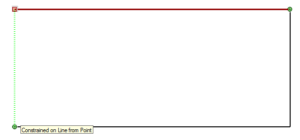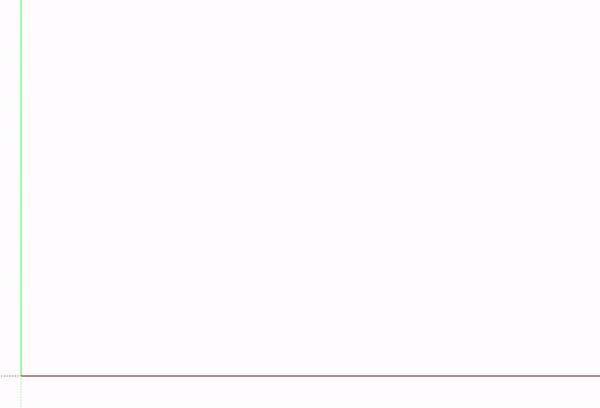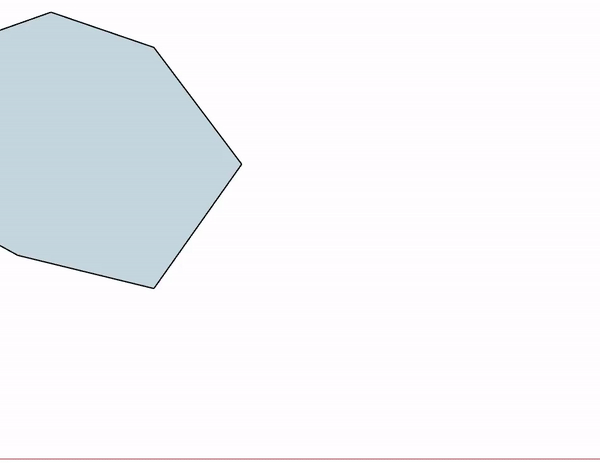In this new tutorial, we will learn the creation of faces at first. Then we will see one of the strengths of SketchUp the “inferences”.
Let’s start, we will setup our SketchUp interface to “top view” and parallel projection to work in 2D environment. You can refer to previous tutorial to understand how to setup 2D: SketchUp Tutorial | Drawing tools: Line, Rectangle, Dimensional input. To create faces, we will take our tool “line” and we will make our lines by doing simple clicks (we do not hold the button of our mouse). As we understood earlier, the tool will automatically start a new line where we will finish our previous line. All this until we close our polygon. I encourage you to do draw some form with your “line” tool. You will notice that by drawing your you would have observed sometimes your line tool got “locked”, displaying different colours: green, blue, red. This is the inference I will explain later in this tutorial. By closing your polygon you have just created a face. By taking the “selection” tool you can select this face, and you will see that by doing this you do not select the lines that allowed you to do this.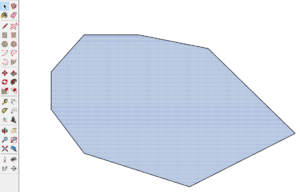
You can delete this face by pressing the “delete” key on your keyboard, and as in the selection it will only affect it, the segments will always be there. You can recreate the face quite easily, just make one line over another. Do not worry, you will not have two lines in one place. SketchUp is made to understand the Designer intent, and in this case, it will understand that you want to make a face. On the contrary, when you open your polygon, deleting one of the segments for example, the associated face will be deleted. Each time you close polygons, SketchUp will make faces. If you did not pay attention while drawing the edges, there is a good chance that your segments are not on the same plane. Of course, you will have noticed that when you use the rectangle, circle or polygon tools, the faces are automatically created on the same plane.
Inferences. These inferences are one of the strengths of SketchUp. We will make a rectangle with the “line” tool to see how they work. For starters we are going to make a simple rectangle. To do this we will take our “line” tool, make a simple click and we will go to our right. If you stay more or less parallel to the red axis your line will take the red colour and will be “mapping” on this axis. This is called an inference. If you get too far out of this axis, SketchUp will understand that you do not want a parallel
line and will stop “mapping” your line on the axis. Make your line on your right, staying parallel to the red axis. Once you have clicked to finish your line, a new beginning, we will go to the top and this time the inference will be on the green axis. Click to finish your line. Then we go back to the left and we will try to put ourselves above the first point. By doing this you will see that SketchUp will understand that you want to put your point on top of each other and it will make you a dotted line to show you that these points will be at the same distance.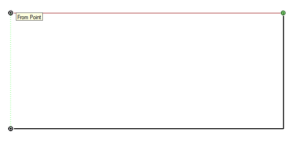
It is possible to force the inference along an axis which allows us to make our line only in specific axis. So we can put our cursor where we want, while keeping our line on our axis. In our example, we can go to the left, the line becoming red we hold the “shift” key pressed of our keyboard and then we can move our cursor on the first point of the rectangle.
You can see that our red line is thickening to show that it is forced. Now all we have to do is close our rectangle
Of course we could have made this rectangle with the rectangle tool, but this will help us to understand how to make inferences along other axes than those of bases. Indeed, we can draw parallel lines and perpendiculars to any line. For that we will take again our polygon any, and we will make a line parallel to one of the segments of our polygon.
Let’s start our line next to our polygon, then we’ll go over the line we want to draw a parallel. Then we return to our point and we will go in the direction of the parallel. You will see that along with the green or red axis, we will have our line 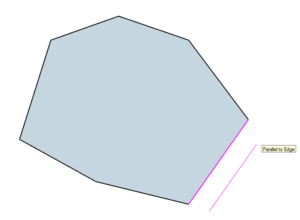 that will change colour to take purple and we will have the text “parallel to edge” that will appear.
that will change colour to take purple and we will have the text “parallel to edge” that will appear.
Finish your line, then make a perpendicular to that line. You will see that there will be a new purple inference that will appear, this time to say that it is perfectly perpendicular. Once this second line is done, we will start our third line again perpendicular, and this time we will press our “shift” key to force the inference. We will
place the cursor of our mouse on the first point of our rectangle. In this way, we have our third point which will be the matching to our first location. We just have to close our rectangle.
Thanks to the inferences and the “line” tool we can therefore make rectangles that are not aligned on the green and red axes. Of course, inferences can be used with tools other than the line tool. You can also use it with the “move” tool for example, that we will lean in our next topic. Next tutorial: SketchUp Tutorial| adhesion of geometries in 2 dimensions. Do provide your comments.


